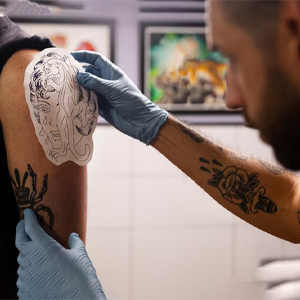Everything You Need to Know Before Choosing Your Tattoo Removal Method
 Are you considering removing a tattoo? Whether it's because your tastes have changed, the artwork didn't turn out as expected, or you're seeking a fresh start, tattoo removal is a significant decision. With advancements in technology, there are now several methods available, each with its own benefits and considerations. Before you make a choice, it's crucial to understand the options thoro- ughly. Here's everything you need to know before choosing your tattoo removal method.
Are you considering removing a tattoo? Whether it's because your tastes have changed, the artwork didn't turn out as expected, or you're seeking a fresh start, tattoo removal is a significant decision. With advancements in technology, there are now several methods available, each with its own benefits and considerations. Before you make a choice, it's crucial to understand the options thoro- ughly. Here's everything you need to know before choosing your tattoo removal method.
1. Laser Tattoo Removal:
Laser tattoo removal is the most common and widely used method, especially in clinics for tattoo removal Sydney. It involves using high-intensity light beams to break down the ink particles in the skin. Here's what you should consider:
- Effectiveness: Laser removal is highly effective, especially for tattoos with dark ink and pigments. Multiple sessions may be required for complete removal.
- Pain Level: The procedure can cause discomfort, often described as feeling like rubber bands snapping against the skin. However, numbing creams or local anesthesia can be used to minimize pain.
- Recovery Time: After each session, the skin may be red, swollen, or blistered for a few days. Proper aftercare is essential to promote healing and reduce the risk of complications.
- Cost: Laser removal can be expensive, with the total cost depending on factors such as the size, color, and location of the tattoo, as well as the number of sessions required.
2. Surgical Excision:
Surgical excision involves cutting out the tattooed skin and stitching the surrounding skin back together. While it offers immediate results, there are important considerations to keep in mind:
- Suitability: Surgical excision is typically recommended for small tattoos. Larger tattoos may require multiple procedures or may not be suitable for this method.
- Scarring: Scarring is a common risk with surgical excision, especially for larger tattoos or those located on highly visible areas of the body.
- Recovery: The recovery period can be longer compared to other methods, and proper wound care is crucial to prevent infection and promote healing.
- Cost: Surgical excision may be less expensive than laser removal, but it can still be costly, especially if multiple procedures are needed.
3. Dermabrasion:
Dermabrasion involves using a high-speed rotary device to sand down the outer layers of the skin, gradually removing the tattoo ink. Consider the following:
- Effectiveness: Dermabrasion can effectively fade tattoos, but complete removal may require multiple sessions.
- Pain and Discomfort: The procedure can be painful, and local anesthesia or sedation may be used to manage discomfort.
- Recovery: The skin will be raw and tender after treatment, and it may take several weeks for the skin to heal completely. Sun protection is essential during the healing process to prevent complications.
- Scarring: Dermabrasion carries a risk of scarring, especially if the procedure is not performed by a skilled practitioner.
4. Chemical Peel:
Chemical peel involves applying a chemical solution to the skin to remove the top layers, including the tattoo ink. Here's what you should know:
- Effectiveness: Chemical peels can help fade tattoos, but multiple sessions are usually required for significant results.
- Pain and Discomfort: The procedure can cause burning or stinging sensations, which can be managed with pain medication or cooling techniques.
- Recovery: The skin will peel and may be red or irritated after treatment. It's essential to follow post-procedure instructions carefully to promote healing and minimize complications.
- Suitability: Chemical peels are generally more suitable for fading tattoos rather than complete removal, especially for older tattoos or those with lighter pigments.
5. Tattoo Removal Creams:
Tattoo removal creams work by penetrating the skin and breaking down the ink particles. While they may seem convenient, there are important considerations:
- Effectiveness: Tattoo removal creams have mixed reviews, with some users reporting minimal results. Complete removal is unlikely, especially for larger or darker tattoos.
- Safety: Some tattoo removal creams contain harsh chemicals that can cause skin irritation, allergic reactions, or other adverse effects. It's essential to choose a reputable product and follow the instructions carefully.
- Time and Patience: Tattoo removal creams require consistent and long-term use to see results, and even then, the outcome may be unsatisfactory.
- Cost: While tattoo removal creams may be more affordable upfront, the total cost can add up over time, especially if multiple products are needed.
Conclusion:
Choosing the right tattoo removal method requires careful consideration of factors such as effectiveness, safety, cost, and potential side effects. Consulting with a qualified dermatologist or tattoo removal specialist is essential to assess your individual needs and determine the most suitable approach. Remember that tattoo removal is a gradual process, and patience is key to achieving the desired results. By understanding your options and making an informed decision, you can embark on the journey to remove your tattoo with confidence.

